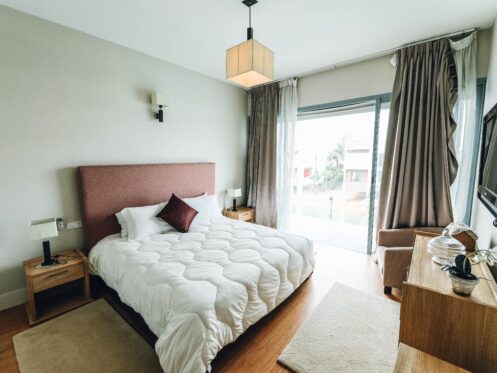Interior house painting this winter can be a challenging task, especially for residents in Irvine, Newport Beach, Huntington Beach, CA, and its surrounding areas. The unique climate conditions of our region demand special attention to ensure a flawless finish. As a professional house painter with years of experience, I’ve faced my fair share of winter painting challenges. In this guide, I’ll share essential tips and personal anecdotes to help you achieve the best results.
Understanding the Climate: Irvine, Newport Beach, and Huntington Beach
Having painted numerous homes in these areas, I can attest to the distinct climate challenges we face. Winters here aren’t as harsh as in some regions, but the cooler temperatures and occasional dampness can still impact your paint job.
Why Interior House Painting This Winter Is Different
Painting during the colder months presents unique challenges. The paint behaves differently, drying times can be unpredictable, and ensuring proper ventilation becomes crucial. I remember a project in Newport Beach where the paint refused to dry properly due to unexpected humidity. It was a learning experience that emphasized the importance of being prepared.
10 Essential Tips for Flawless Results
1. Choose the Right Paint for Cold Weather
Different paint formulations respond variably to temperature changes. In colder climates, it’s essential to opt for paints that can withstand the drop in temperature without compromising on quality. Reading labels or consulting with paint experts can guide you in the right direction. Also, choosing the right finish for your interior house painting project is important. At Rock & Rollers Painting, our experience has led us to a selection of paints specifically designed for winter conditions, ensuring durability and a pristine finish.
2. Ensure Proper Room Ventilation
While it might seem counterintuitive to allow cold air in, proper ventilation is paramount when painting. Trapped fumes not only pose health risks but can also affect the paint’s drying process. My experience in Irvine taught me the significance of airflow; the overpowering paint odor lingered for days due to inadequate ventilation, emphasizing the need for a well-ventilated space.
3. Prep Your Walls Thoroughly
The foundation for a flawless paint job lies in the preparation. Walls accumulate dust, grime, and imperfections over time. Cleaning, sanding, and priming the walls ensure that the paint adheres properly and looks smooth. From my experience, many DIY enthusiasts overlook this crucial step, leading to unsatisfactory results and wasted effort.
4. Monitor Humidity Levels
Humidity plays a pivotal role in how paint dries. Too much moisture in the air can lead to longer drying times or even a ruined finish. Investing in a humidity monitor can help you keep track and adjust conditions accordingly. A past project in Newport Beach taught me this the hard way; a simple monitor could have prevented the paint mishap.
5. Invest in Quality Brushes and Rollers
The tools you use can significantly impact the outcome of your paint job. High-quality brushes and rollers provide a smoother application, reducing streaks and ensuring an even coat. While they might cost a bit more upfront, the impeccable finish they offer makes it a worthy investment.
6. Warm Up Your Paint
Paint viscosity changes with temperature. Cold paint can be challenging to apply and might not spread evenly. By storing paint cans in a warmer room before use, you can maintain the paint’s consistency, making it easier to work with and ensuring a uniform application.
7. Schedule Painting for Mid-Day
Temperature fluctuations throughout the day can affect your paint job. By painting during midday, you capitalize on the warmest hours and ensure the paint behaves consistently. From my observations, paint applied during these peak hours tends to dry more uniformly, leading to a better finish.
8. Keep a Consistent Room Temperature
Fluctuating temperatures can adversely affect the drying process. Using heaters, if needed, can help maintain a consistent room temperature, ensuring the paint dries evenly. This consistency reduces the chances of issues like cracking or peeling, ensuring a long-lasting finish.
9. Be Patient with Drying Times
One of the challenges of winter painting is the extended drying times. While it can be tempting to touch or add another coat quickly, patience is crucial. Giving each layer ample time to dry prevents issues like smudging, sticking, or uneven finishes.
10. Consult with Local Professionals
Every painting project has its unique challenges. If you’re ever unsure about a step or need expert guidance, don’t hesitate to reach out. At Rock & Rollers Painting, our team has the knowledge and expertise to assist you. A quick call to 949-806-3205 can provide you with the advice you need.
Summer vs. Winter Painting in Irvine and Surrounding Areas
While summer offers its challenges, like faster drying times and the risk of paint bubbling, winter requires more preparation and patience. However, with the right approach, you can achieve a summer-quality finish even in the colder months.
Rock & Rollers Painting: Sealing Your Winter Painting Success
Interior house painting this winter doesn’t have to be daunting. With the right techniques and a bit of expert guidance, you can achieve a flawless finish. And remember, if you ever need professional assistance or advice, Rock & Rollers Painting is just a phone call away at 949-806-3205. Happy painting!





